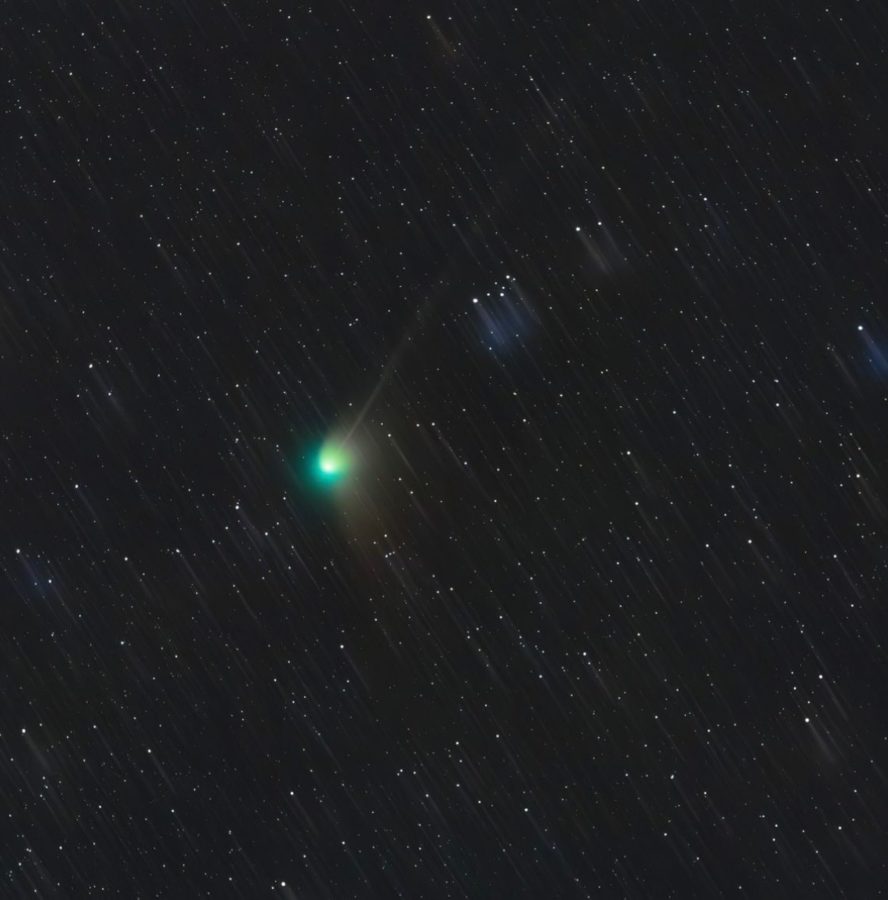Bucknell professor captures photos of green comet
March 3, 2023
A green comet traveling through space made its closest approach to Earth on Feb. 1 and Professor Jack Gallimore, a physics professor at the University, photographed the comet before it left the solar system forever, using telescopes at the Bucknell Observatory.
The comet, officially named C/2022 E3 (ZTF) was originally discovered by the Zwicky Transient Facility (ZTF) in early March 2022, and was the third of its kind found that year. However, what made this comet unique was its green glow. In a previous interview with NorthCentralPA.com, Gallimore explained that the comet is green is because of the carbon molecules being heated by the solar UV rays.
He also said in this interview that “current calculations suggest that the comet has been on an inbound orbit for 50,000 years, which means it originally orbited at a distance beyond 14,000 times the distance between the Earth and the Sun.”
When it passed by on Feb. 1 and 2, it was on an “escape orbit,” according to Gallimore.
“Determining whether a comet is on a periodic orbit or an escape trajectory is straightforward,” Gallimore said, when asked by The Bucknellian about how he knew the comet’s trajectory. “In a periodic orbit, a celestial object is constantly falling toward another…The maximum speed of the comet’s orbit is close to or exceeds the escape speed, meaning that it will leave the solar system.”
“My personal interest in the comet is more related to astrophotography as a hobby than astronomy as a profession,” he said. “The Bucknell Observatory has a new suite of telescopes that we use for classes and public outreach, and I have been working on getting them ready for regular use.”
Gallimore had originally heard about the comet “through the grapevine.” However, the most important information was about the comet’s brightness.
“Some calculations suggested it might be visible without a telescope…Predicting the maximum brightness of a comet is very challenging because they evolve rapidly as they approach the Sun,” Gallimore said. “Unfortunately, C/2022 E3 did not get bright enough to view without at least binoculars.”
Gallimore said it was a new telescope setup that he has been working on that allowed him to find the comet.
“I found the comet easily and could track its motion relative to background stars,” he said. “With the new setup, Bucknell astronomy students can track comets and asteroids similarly and learn to work out the orbits themselves.”
Gallimore’s Instagram — @jgallimo — currently displays time-lapsed images of the comet’s motion.






















